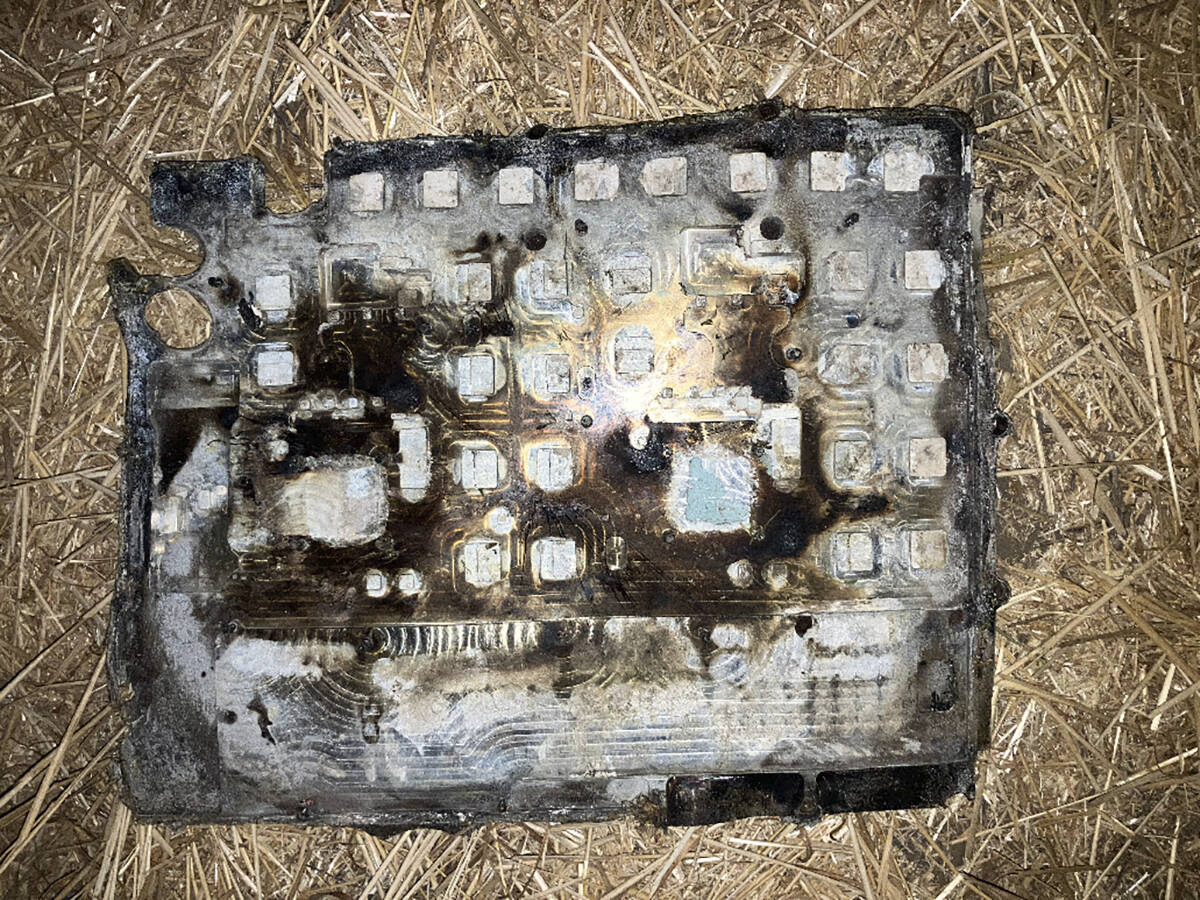Farmers and farm machinery designers have been careful to avoid squashing the soil underneath the tires and treads of today’s gigantic tractors and combines.
But what’s happening deeper down, beneath the layer in which the knives and openers pass?
The answer is disturbing, according to just-published research.
“Our study provides evidence that present trends of increasing agricultural vehicle weights are not sustainable, necessitating consideration of subsoil critical stresses in future designs to supplement the present focus on traction and contact stress,” write Thomas Keller and Dani Or in their research article published by the Proceedings of the National Academies of Science.
Read Also

Farmers asked to keep an eye out for space junk
Farmers and landowners east of Saskatoon are asked to watch for possible debris in their fields after the re-entry of a satellite in late September.
“We show here that while surface contact stresses remained nearly constant over the course of modern mechanization, subsoil stresses have propagated into deeper soil layers and now exceed safe mechanical limits for soil ecological functioning.”
In simple terms, that means that while wider and wider tires and treads on farm machinery have spread out the per-square-metre impact of heavier and heavier farm equipment on the soil surface and tillage layer so that it is no more severe than in the 1950s, deeper down the soil is at grave risk of being compacted and unable to support robust crop growth. The weight might be spread out up high in the soil, but deeper down it’s not.
“Evidence from long-term field studies shows that subsoil compaction is difficult to reverse and can impair soil functioning for years to decades.”
The study focuses on soils in regions dominated by heavy, modern equipment and using conventional tillage, so western Canadian minimum-till conditions are not specifically examined in this paper. Farming in the U.S. Midwest, Europe, South America and eastern Australia are the focus of concern. Arid regions with modern equipment, areas relying upon smaller machinery, and areas only lightly mechanized are at less risk.
“The fraction of arable land that is presently at high risk of subsoil compaction is about 20 percent of global cropland area,” write Keller and Or.
“We show that subsoil stresses under farm vehicles have affected progressively deeper soil layers over the past six decades. While soil compaction as indicated by exceedance of the critical stress threshold had been restricted to shallow soil layers within the annual tillage depth a few decades ago, it has now penetrated deeper into the subsoil, thus potentially affecting untilled crop root zones.”
This analysis will not be a shock to experts in soil compaction research, but it broadens the discussion from localized observations and regional studies to a global concern. With the ever-increasing size of farm machinery, how can subsoil compaction be avoided? Keller and Or think overall weight impacts on the subsoil, not just the tilled layer, need to be considered.
“Trends of increasing weights of agricultural machinery suggest that the focus of agricultural vehicle design on increasing efficiency, flotation, and traction may have ignored intrinsic soil limits exceeded with deeper subsoil stress propagation,” they write.
“Considering the narrow range of mechanical limits of most soils in temperate regions, future agricultural vehicles must be designed with intrinsic soil mechanical limits in mind to avoid chronic soil compaction.”
Keller, of the Swedish University of Agricultural Sciences, and Or, of ETH Zurich, got much international media attention with their study, but that was not solely due to their dire warnings about subsoil compaction.
Their paper, entitled “Farm vehicles approaching weights of sauropods exceed safe mechanical limits for soil functioning,” explicitly compares today’s giant farm machines with the biggest dinosaurs, which also moved across grasslands and chewed up vast amounts of plant matter.
They consider the danger coming to subsoil from heavy farm equipment and ponder how yesterday’s humongous dinosaurs could have spent millions of years treading across grasslands without causing massive subsoil compaction and destroying the ability of the land to produce the huge amounts of food they needed.
Their best guess is that the saurian monsters must have avoided tromping down the land entirely.
“We hypothesize that unconstrained roaming of sauropods would have had similar adverse effects on land productivity as modern farm vehicles, suggesting that ecological strategies for reducing subsoil compaction, including fixed foraging trails, must have guided these prehistoric giants.”
Perhaps dinosaurs practised their own form of controlled-traffic farming.


















